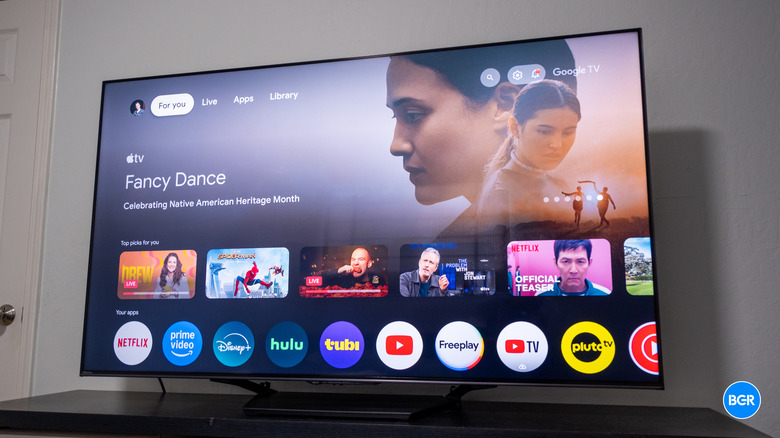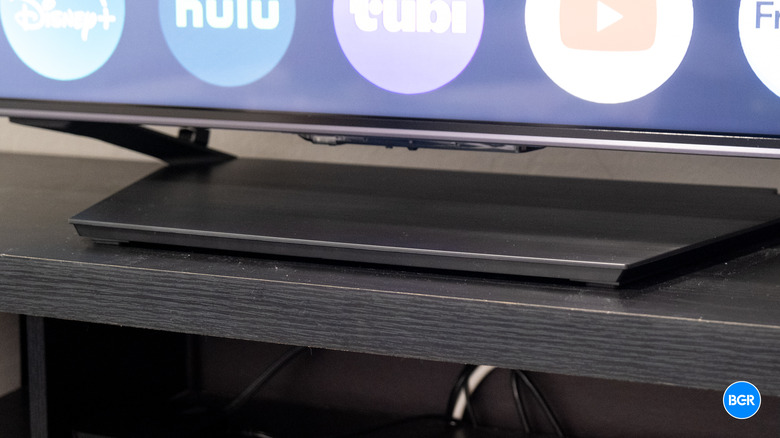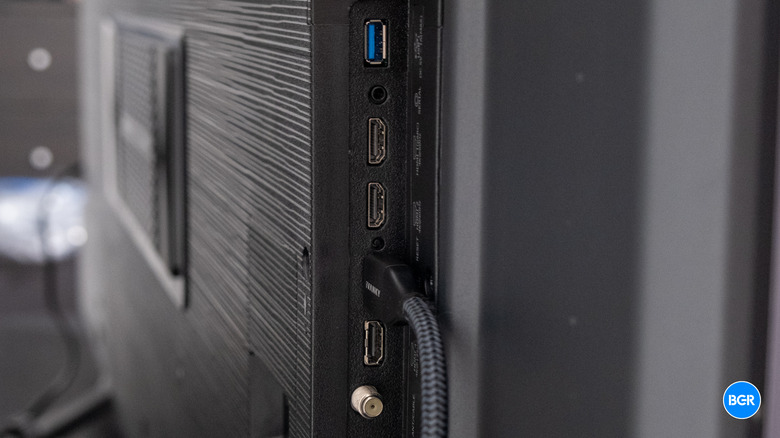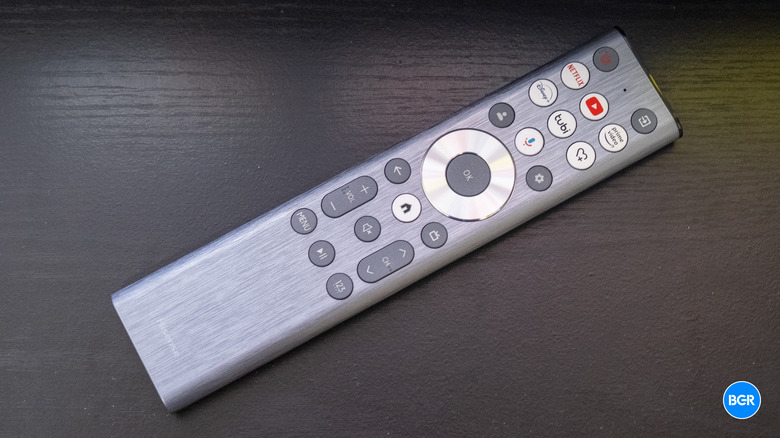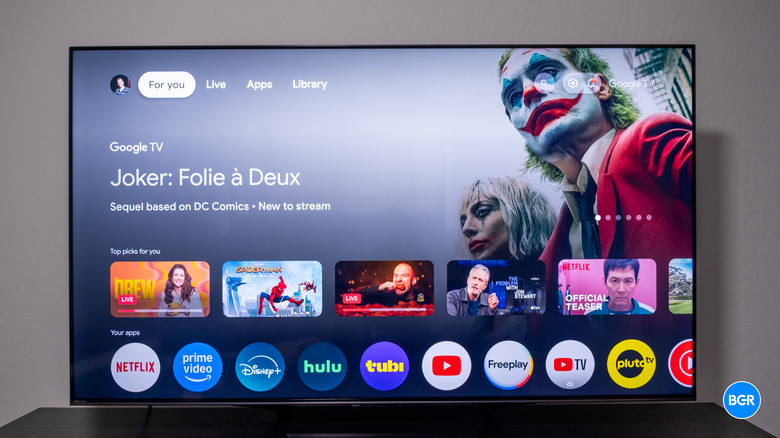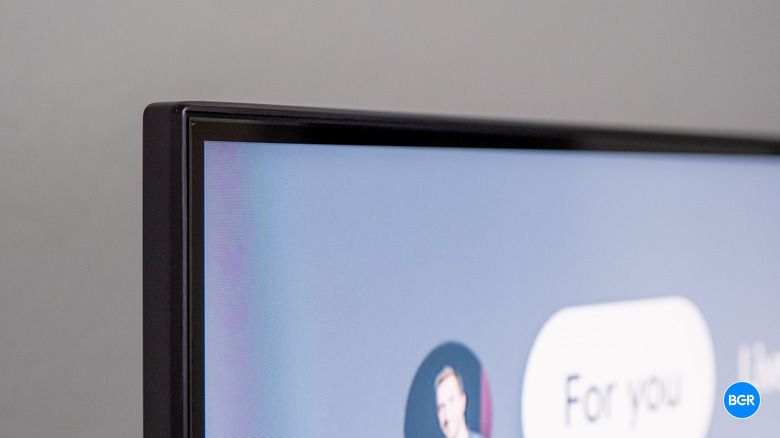Hisense U7N Review: Incredible Value
- Excellent image quality
- Helpful gaming features
- Google TV works well
- Low price
- Poor audio
- Some dirty screen effect
| Buy From | List Price | Sale Price | |
|---|---|---|---|
| Amazon | $798 | $647.99 | See It |
We may receive a commission on purchases made from links.
Hisense is building hit after hit in the mid-range TV space. The company has been building excellent quality TVs at a reasonable price for a number of years now, showing that you don't have to spend thousands and thousands of dollars to get close to the best image quality in town. Sure, its TVs don't quite compare to the best Samsung or LG TVs out there, but they get pretty close, often at around half the price or less. The Hisense U8N is Hisense's flagship model for this year, and it boasts stunning image quality for a TV in its price range. But what if it's still slightly too expensive for you? The Hisense U7N is built as the step-down model for those who still want that mini-LED backlighting but at a slightly lower price.
So how does the U7N compare with the U8N? And is it worth buying? It turns out, if the Hisense U8N offers 95% of the performance of the best TVs out there, the Hisense U7N offers 95% of the U8N's performance.
Hisense U7N specs
| Display size | 55, 65, 75, 85 inches |
| Resolution | 3840 x 2160 |
| Display type | Mini-LED ULED |
| Refresh rate | 144Hz |
| Ports | 2 x HDMI 2.1, 2 x HDMI 2.0, USB 2.0, optical, ethernet, aux |
| HDR support | HLG, HDR10+, Dolby Vision |
| Software | Google TV |
| Price | $799.99 – $2,199.99 |
Design
The design of the Hisense U7N isn't necessarily the most modern out there, but it's not bad at all for a TV in this price range. The bezels around the screen are relatively slim, and I quite like the stand. The stand is really just two feet that attach to the bottom of the TV, but an included plastic cover can be placed over the feet to make it appear as though it's one wider stand.
This design does, however, mean that there's only one position for the feet on the bottom of the TV, and its position will impact a soundbar if you want to use it with one. That said, the soundbar can thankfully be placed on the stand or feet perfectly fine, though it might look a little silly with a gap between your TV furniture and the bottom of the sides of the soundbar.
The TV isn't overly thick, but it's not necessarily super thin either. I've really liked the approach that Samsung has been taking with its One Connect Box, breaking out connectivity and processing into a separate box that makes for a much thinner display that looks more premium when mounted on a wall. That, of course, is a premium approach to TV design. It would be interesting to see Hisense experiment with this at some point.
Ports
The Hisense U7N has a solid port selection overall. Like most TVs these days, it has four HDMI ports, two of which are HDMI 2.0 and the other two HDMI 2.1. This is the same setup as the Hisense U8N, which I wish offered four HDMI 2.1 ports. The same goes for the U7N. I hope HDMI 2.1 becomes the only HDMI port we need in the very near future. Of course, by the time it does, HDMI 2.2 will start rolling out.
HDR 2.1 on this TV enables some helpful gaming features. Specifically, when you connect the right equipment through an HDMI 2.1 connection, you'll get a 4K 144Hz experience, which includes support for VRR, AMD FreeSync Premium Pro, NVIDIA G-Sync, and ALLM. It's all the modern gaming features you would want from a TV in 2024, which is really nice to see.
I'm also glad that the TV's eARC port isn't one of the HDMI 2.1 ports. I've seen plenty of TVs pair them together, leaving one HDMI 2.1 port left for gamers who also have a sound system that connects through HDMI. I'm not sure if this is an issue with four HDMI 2.1 ports in the first place.
The rest of the ports are relatively standard. There's an Ethernet port for wired internet connectivity, along with an optical port for older soundbars that can't connect through ARC or eARC. There's also a USB 2.0 port.
Remote
The remote that comes with the Hisense U7N is similar to the one that comes with the U8N, offering software controls and a relatively simple layout. The remote also has quick access buttons for Netflix, YouTube, Prime Video, Disney Plus, Tubi, and a sixth programmable button, which you might want to use for a service like Max, Hulu, or Peacock.
Unfortunately, it seems like the remote that ships with the US model is different from the remote that ships with the UK Hisense U7N, which is solar-powered and features USB-C charging. For the US model, Hisense has stuck with an AAA battery-powered remote, which I hope it does away with stateside relatively soon. Thankfully, at least Hisense includes two AAA batteries in the box.
Software
As you would expect from a Hisense TV in 2024, the Hisense U7N comes with Google TV pre-installed. It's pretty standard software, but it works well, and Google has worked hard to refine the interface to make it easy to navigate and well-designed. I find that it's easy to find content that you need when you need it on Google TV. While I mostly exist in the Apple ecosystem and use an Apple TV in my personal life, I certainly have no problem scrolling through Google TV menus and finding my favorite content when I'm reviewing a new TV.
The Hisense U7N also has some of Hisense's own software features built into it, though not through Google TV necessarily. The best example of this is the Game Bar, which is used to adjust gaming settings if and when needed. This is really for those who are super specific about the types of settings they want enabled and disabled, as the TV is pretty good at automatically enabling the best settings when it detects a console connected with the right cable — not to mention the fact that most modern games have you adjust things like HDR settings when you first start playing. That said, again, if you want more control over your gaming experience, you might quite like what the Game Bar has to offer.
Performance
The best thing about modern Hisense TVs has nothing to do with the design or even the software. It has to do with the image performance. Thankfully, the trend of excellent image quality for a reasonable price continues with the Hisense U7N.
The Hisense U7N has Mini LED backlighting for better contrast and deeper black levels, and it combines that with Hisense's ULED technology for more vibrant colors. Generally speaking, I found that through these two technologies, the TV produced an excellent image overall. However, I did find that the image required a little more tweaking than other modern licensed TVs have required. This is something that I feel perfectly comfortable doing as someone intimately familiar with TV technology and how different TV settings work, but I don't really trust that most average customers will be able to dive into the settings to create the best overall image.
Thankfully, even with the default settings, the TV does still look quite good. It's just that with some effort, you can make it look even better. I generally tended towards using Filmmaker mode in SDR, though the room I was testing in was dark enough that a super high level of brightness wasn't necessary. If you are viewing in a brighter room, then you might want to select a different mode that increases the brightness a little, like Theater Day mode. If you're trying to get some control over the brightness of the TV, I recommend switching off the automatic brightness feature that uses the TV's built-in optical light sensor to change brightness depending on the environment. It's a neat idea for energy savings, and if you want to use less energy, then you can keep it enabled. However, it's not ideal for those trying to create the perfect image.
In all situations, I found that the TV had good control over its backlighting, which is a byproduct of using Mini LED technology. This essentially means that the TV is able to produce decent details in the shadows, which would otherwise be lost by a TV with less control. On the other end of the spectrum, the TV got bright enough for even bright rooms, and highlights in Dolby Vision popped.
Of course, I would describe the experience of watching content on the Hisense U8N similarly. So what's the difference? Well, to nitpick, the U7N did produce some blooming, though most won't find it noticeable in average viewing situations. Additionally, the off-axis experience of watching TV on the U7N wasn't quite as impressive, perhaps owing to the fact that the U8N can get a fair bit brighter. Lastly, I found that the overall display uniformity wasn't as impressive, at least on my Hisense U7N compared to my U8N. The TV did have some dirty screen effect out of the box, and while it wasn't visible most of the time, there were situations in which I could see it in day-to-day viewing.
All that to say that, obviously, the Hisense U7N isn't as good as the U8N. Why would it be, given the fact that it's cheaper and made by the same company? But it's worth being at least informed about the differences and knowing that if you can stretch your budget to the U8N, you will get a better viewing experience.
And despite those differences, the U7N still produces an absolutely excellent image for the price. Seriously — it's crazy how great this TV looks for one that starts at only $800.
Audio
Not crazy is the audio experience, but again, that's to be expected of a mid-range TV. I've considered stopping discussion about audio built into TVs in general because it feels like rehashing the same few sentences every single time I write a TV review. But alas, here we are again. If you care about the audio experience offered by your TV, then you should buy a soundbar instead.
Even a cheaper soundbar will sound a whole lot better than the speakers built into the U7N, which sounded fine for TV speakers in this price range, but lacked deep bass and weren't very clear in the high end. Seriously, it's hard to understate how important sound is to a viewing experience, and it's worth pairing the excellent image quality with something that can produce good sound.
Conclusions
The Hisense U7N is yet another hit from Hisense. The TV certainly isn't as impressive as the higher-end U8N, and if you can stretch to buy the U8N, you should do so. But at this price, you simply cannot do better than the U7N. It may not produce the best audio or have the most modern design, but it excels where it counts — image quality.
The competition
It's hard to consider any alternatives as true competition at this price range because, really, they're not. Take my advice and buy the Hisense U7N if you're looking for a TV in its price range. The only exception to that rule would be if you somehow stumbled upon a great deal for a high-end LG OLED or Samsung OLED, which will obviously make for a better image. But if you're buying a new TV in the price range of the U7N, it's the way to go.
Should I buy the Hisense U7N?
Yes, it's the best TV in its price range by a mile.
